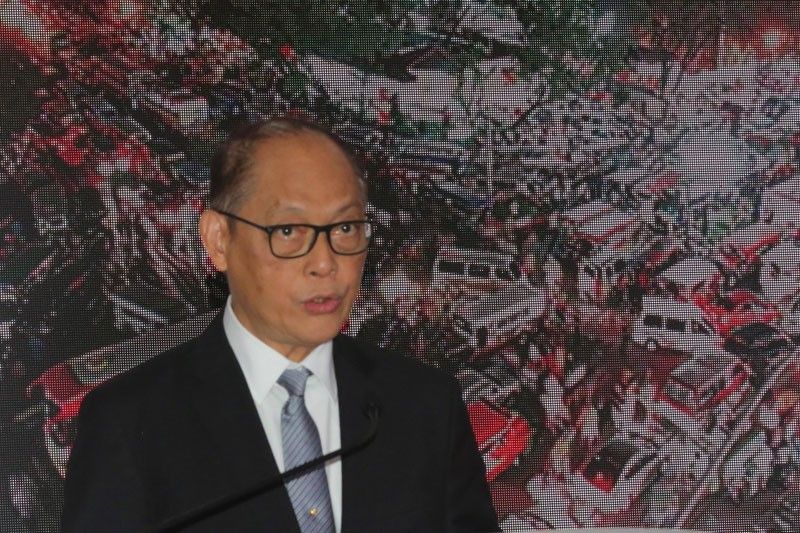Economic managers slash 2018 growth target

MANILA, Philippines — The Development Budget Coordination Committee (DBCC) yesterday slashed the Philippines’ economic growth target due to “new realities” in both the local and international landscape, including high domestic inflation, rising global oil prices, and tightening monetary policy in advanced economies.
In a press briefing following the 174th meeting of the DBCC, Budget Secretary Benjamin Diokno said committee members have agreed to lower the government’s gross domestic product (GDP) growth target for 2018 to a range of 6.5 percent to 6.9 percent from the previous range of seven to eight percent.
Growth targets for 2019 to 2022, however, remained unchanged at the seven to eight percent level.
“The GDP growth target range has been adjusted from seven to eight percent to 6.5 percent to 6.9 percent for 2018, while the agrowth targets for 2019 to 2022 remain unchanged,” Diokno said.
Finance Secretary Carlos Dominguez said the DBCC has decided to adjust the economic growth target for the year to reflect new domestic and global developments, including the escalating trade war between the US and China, rising global oil prices, and tightening of monetary policy.
“We have to all realize that we are living in a different world now. Six months ago, there were only rumors of trade war. Starting in May, the trade war has actually begun and has escalated, adding a large measure of uncertainty into the world economic picture,” Dominguez said.
“Therefore, prices of oil have risen very steeply. Interest rates, which factor in risks, have increased and the US globalization of their interest rate policy has continued. So the world, starting in May, has been very difficult and I think our estimates and projections just reflect these things,” he said.
Despite these challenges, Dominguez expressed confidence that the Philippine economy is “strong and resilient” enough to overcome difficulties.
“But we are not complacent. We are taking very deliberate actions to address these issues we are facing,” he said.
Diokno said the government has proposed key strategies to spur the country’s economic growth from both the demand and supply sides.
On the demand side, the budget chief said the government is seeking to increase household consumption through rice tariffication, the implementation of social mitigating measures under the Tax Reform for Acceleration and Inclusion (TRAIN) law, and policy interventions in the education and labor sectors.
He said the government also wants to encourage more investments by accelerating the infrastructure program and reducing foreign investment restrictions and cost of doing business; and to boost exports with the full implementation of the Export Development Plan and exploration of more trade agreements.
Meanwhile, supply side strategies involve agricultural development through high-value crops and increased access to technologies and credit, investments in manufacturing, timely implementation of construction projects, housing programs, energy security initiatives, entry of new telecommunications firms and improvement in national broadband, sustainable tourism, and completion and dissemination of master plans relating to transport, water and sanitation, and other areas.
“We are confident that these measures of the Duterte administration will propel the economic growth of Philippines into the GDP growth target range, enable the economy to attain upper-middle income status (with gross national income per capita of $4,000) by end-2019 and reduce poverty from 21.6 percent in 2015 to 14 percent in 2022,” Diokno said.
The interagency DBCC, composed of the Department of Finance, Department of Budget and Management, National Economic and Development Authority and the Bangko Sentral ng Pilipinas, also revised some of its macroeconomic assumptions.
The government’s inflation forecast for 2018 was further raised to a range of 4.8 percent to 5.2 percent from the previous estimate of four percent to 4.5 percent. Inflation is also seen to settle between three percent and four percent next year, and to come back to the two to four percent range by 2020 to 2022.
“This is consistent with the government’s assessment that inflation will go back to the target level by next year. We are optimistic that the administration has taken enough measures to tame inflation in the last quarter of 2018 and the full year of 2019,” Diokno said.
He said Administrative Order 13 and Memorandum Orders 26 to 28 signed by the President last month are expected to boost food supply and bring down the price of food items.
Diokno said Congress is also seen to pass the Rice Tariffication Bill before the end of the year.
The economic team also adjusted upward its assumptions for Dubai crude oil prices. This is expected to average $70 to $75 per barrel in 2018, and continue to increase to $75 to $85 per barrel next year. In 2020, this range is forecasted to drop to $70 to $80 and as low as $65 to $75 for 2021 and 2022.
The peso – peso-dollar exchange rate is also expected to average at 52.5 to 53 this year, and settle at 52 to 55 to $1 range for 2019 until 2022.
Meanwhile, the DBCC also adjusted its fiscal program for 2018.
Revenue collections are projected to reach P2.82 trillion this year, equivalent to 16.1 percent of GDP. This is slightly lower than the original P2.846 trillion revenue program for 2018, due to the deferred implementation of the e-receipts and fuel marking under the TRAIN.
The economic team said TRAIN, alone, is projected to contribute P63.3 billion to the total revenue.
The government’s disbursement program was likewise reduced to P3.346 trillion, equivalent to 19.1 percent of GDP. This is lower than the original target of P3.37 trillion.
As a result, the government’s nominal deficit ceiling was revised to P526.8 billion for this year, equivalent to three percent of GDP.
- Latest
- Trending
























